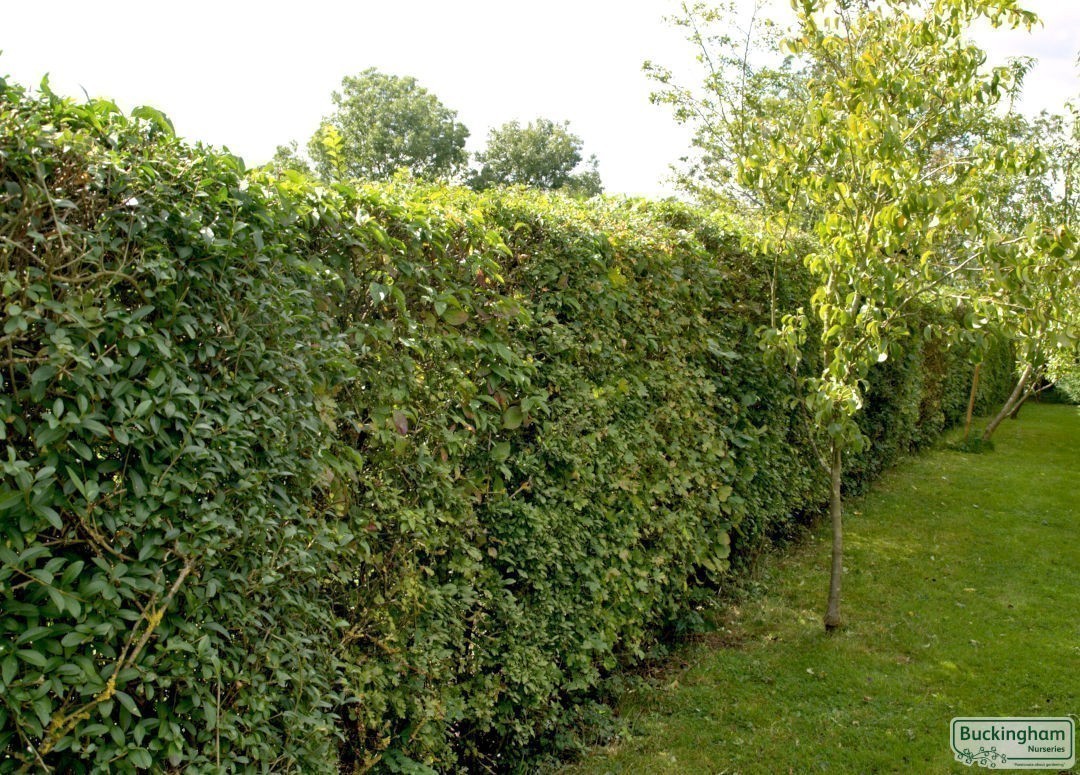Mixed Native Hedging
| Size / Type | Price per item for | |||||
|---|---|---|---|---|---|---|
| 1+ | 5+ | 50+ | 250+ | 1000+ | ||
| Price per item for | 1+ | 5+ | 50+ | 250+ | 1000+ | |
|
Br
|
£1.25
|
£1.25
|
£0.98
|
£0.90
|
£0.85
|
|
|
Tr
|
£1.85
|
£1.85
|
£1.54
|
£1.40
|
£1.30
|
|
|
Cg 40-60cm
|
£14.95
|
£13.90
|
£12.85
|
£12.85
|
£12.85
|
|
-
Plant Types & Availability - More information
Br = Bare Root Plant, Tr = Bare Root Transplant, Cg = Cell Grown
All prices include VAT at 20%.
Mixed native hedges are a common sight in the British countryside and are part of our rich heritage. They create a habitat for many wild creatures which are beneficial. Even if you only have a relatively small garden a native hedge can look very attractive, especially if you back onto open fields.
A native hedge can be kept to a formal shape if clipped regularly, or it can be left to have a wilder look. However cared for, the fact that it is a mixture of plants gives it plenty of interest at different times of the year.
We will select a mixture of native species normally found in established country hedges. About half the mixture will be 60-90cm (2-3ft) seedling Quickthorn and the balance selected from 60-90cm (2-3ft) seedling Alder Buckthorn, Blackthorn, Field Maple and Spindle, and 45-60cm (1.5-2ft) Dog Rose, Dogwood, Guelder Rose, Hazel and Sweet Briar.
Occasionally, we may substitute 60-90cm (2-3ft) Common Alder, Common Buckthorn, Sea Buckthorn and 45-60cm (1.5-2ft) Wayfaring Tree, or other native hedging plants.
For every 10 metres length of hedge we recommend 27 plants (10 yards = 25 plants), giving an average planting distance of 36cm (14ins) between plants, but be guided by the planting distances listed for individual varieties. For a denser or stock-proof hedge we recommend a double row planted 50cm (20ins) apart, 38cm (15ins) between rows, that is 40 plants for a 10 metre length (36 plants for a 10 yard length).
Save 10% on this plant when collecting from the Garden Centre - discount will be automatically applied when Click and Collect is selected - click here for more details.
Mixed Native Hedging is available as:
Br = Bare Root Plant
Tr = Bare Root Transplant
Cg = Cell Grown
Bare-Root Plants (Transplants)
Bare-root plants are sold without a pot/soil around the roots. This is a more cost effective and environmentally friendly way of growing plants. To ensure the best plant health we do not store our plants in cold storage, but they are left in our field or plant beds until they are ready for packing or collection.
Items marked Br are bare rooted plants grown from cuttings and are typically 1-2 years old. Transplanted plants have been lifted from the ground and replanted. This encourages a better fibrous root system and makes the plant stronger and bushier.
Cell Grown Plants
These plants are grown in small polythene pots (or cells) and can be planted at any time of the year.
Availability
Cell Grown are generally available all year. Bare rooted plants are only available when the plants are dormant (typically from late November to March).
If a plant is currently out of stock because it is out of season (for example, bare rooted plants in summer) or we have sold out but we are expecting more to be available you can pre-order the plant. We only charge credit/debit cards when an order is despatched, not when an order is placed.
Planting Distances for planting as a Hedge
Mixed Native Hedging can can either be planted as a single row, or if a thicker hedge is required (for example to keep animals out) it can be planted as a double row.
SINGLE ROW - Plant 36cm/14ins apart .
.
DOUBLE ROW - Plant in two rows with plants on each row 45cm (18ins) apart and 38cm (15ins) between each row:
To calculate the number of plants needed for a length of hedging, click on Planting Distance Calculator above.
Planting Guide & RootGrow
We recommend planting with RootGrow. The recommended amount for RootGrow for an order will be shown in your shopping basket.
We will send out a planting guide with your order, you also can find a guide to planting here.
Pruning
Hedging - As a general rule, plants grown for hedging need pruning to encourage side branching. Usually the harder a plant is pruned the bushier it will be. If they are not pruned there is a danger that the hedges will be thin and bare at the base and that the tips of the plants will die back. If the plant is naturally bushy, less or sometimes no pruning will be needed to achieve a dense hedge.
Mixed Native Hedging: Shrubby climbers. Cotoneaster, Jasmines, Pyracanthas, Star Jasmine and some fruit. These should be planted against the wall.
- Native/Wildlife/Evergreen
-
RHS Plants for PollinatorsYes
-
Good for Wildlife/BeesYes
-
NativeYes
-
Evergreen/DeciduousDeciduous
-
- Plant Height and Growth
-
Hedge Height1.5-2.4m (5-8ft)
-
Average Growth per Year30-60cm (1-2ft)
-
- Root Type/Plant Size
-
Root Type/Plant SizeBare Root Plant
10 Cell Grown Plants, 40-60cm (16-24ins)
Bare Root Transplant -
Potted/Bare RootCell Grown
Bare Root
-




